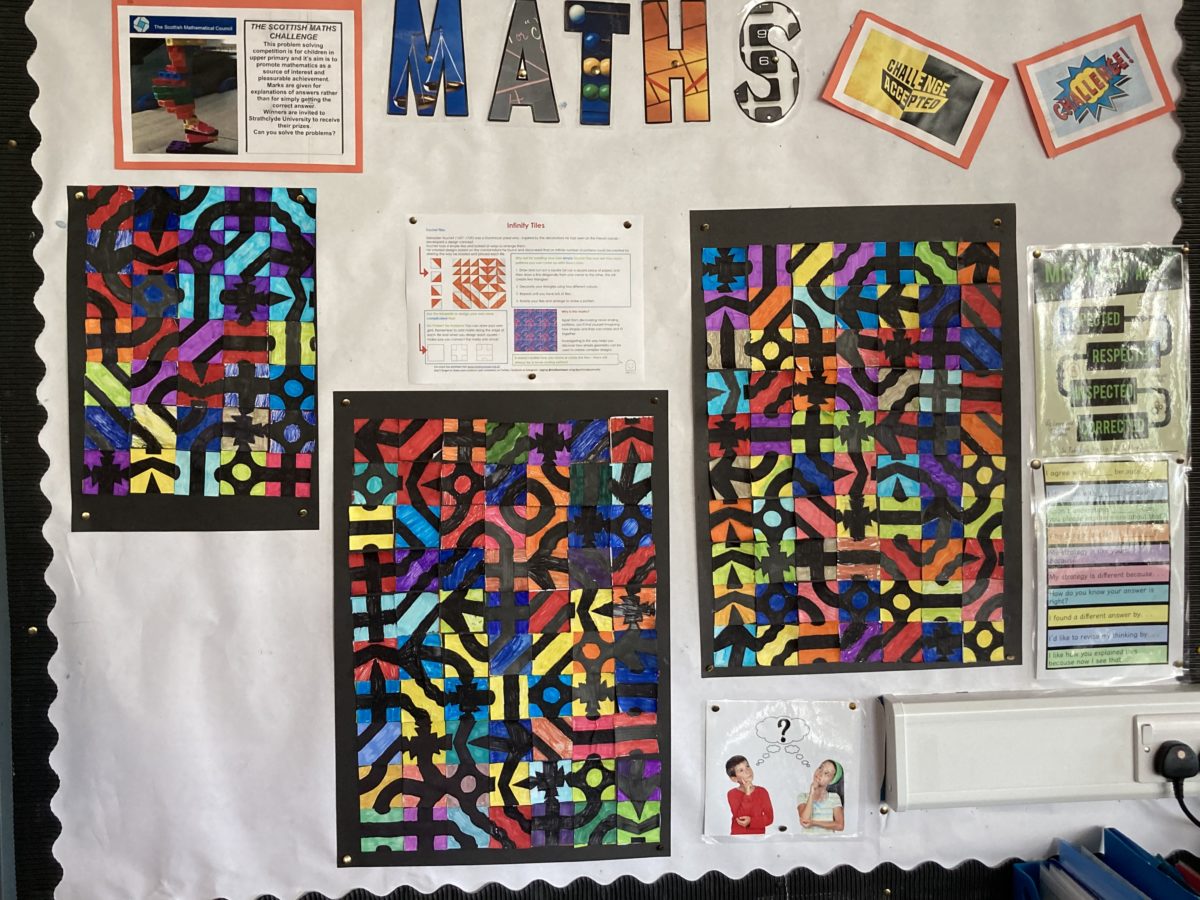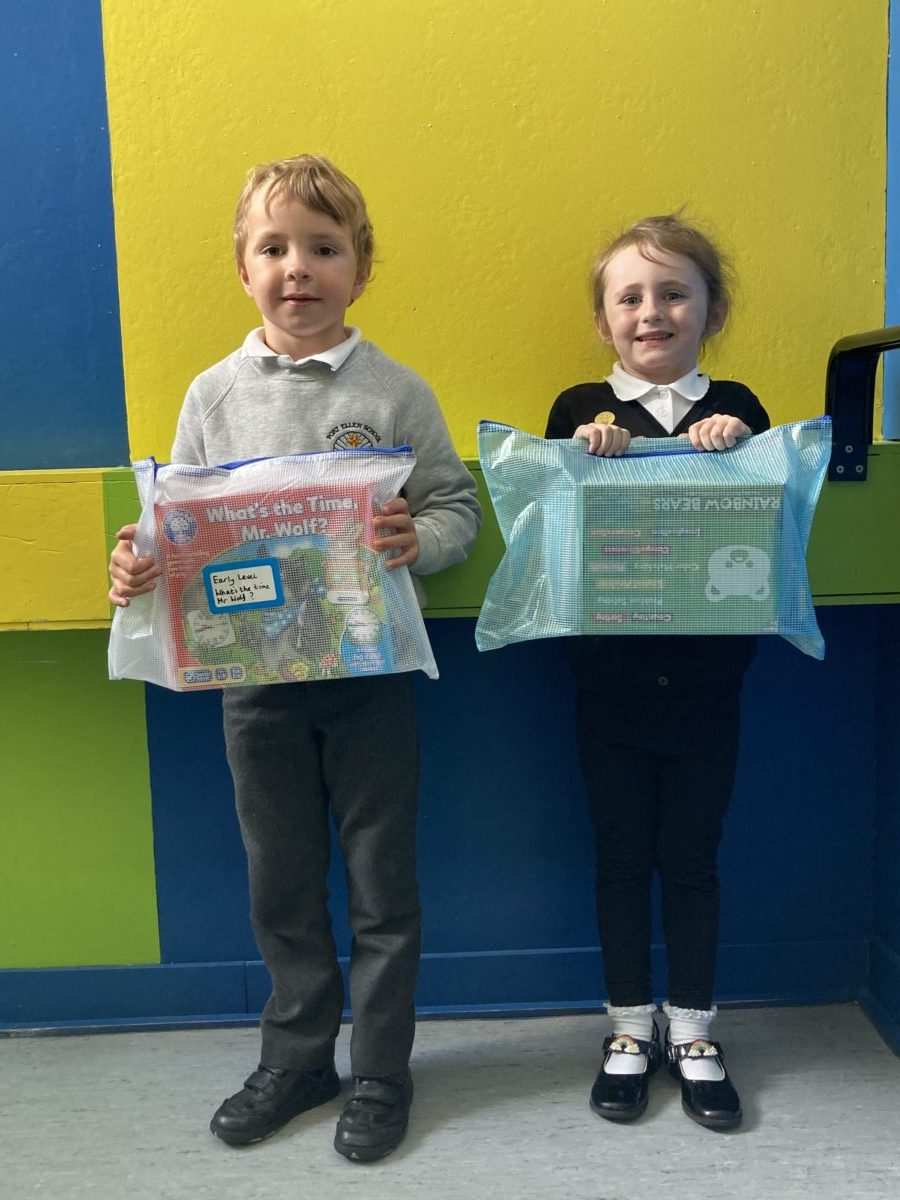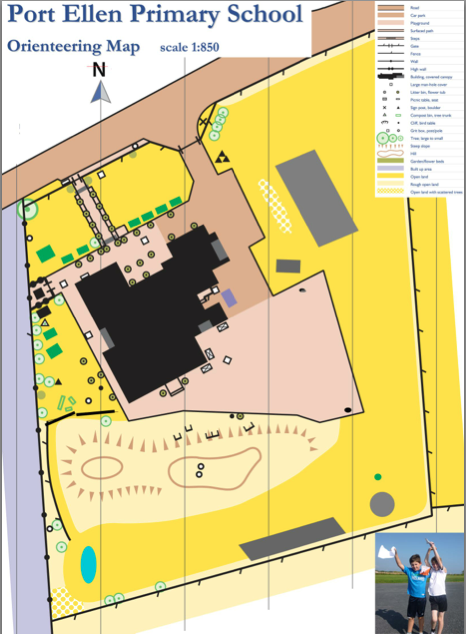On the 7th of June to the 8th of June the primary silver-award-winners went on a trip to Glasgow. The Scottish Maths Challenge is a series of difficult word problems that children in Scotland compete in. The different awards you can get are bronze, silver and gold. The silver winners of Port Ellen Primary (Chloe Bonar P7, Iona Kirkpatrick P7 and Evie Wood P6) were also accompanied by Ciara from Bowmore Primary. There were a lot of different activities for the four pupils that went on the trip. To name a few; the Glasgow Science Museum, the Cinema and a lot of shopping. At the awards ceremony all the girls received certificates and mugs. When they were at the ceremony they got asked some difficult questions about big numbers like, how many people are there in the world? The answer to that question is around 7.8 billion! One of the other questions was about Islay! The question was, how many people could you fit on Islay? The answer was a shocking 3.095 billon! All the girls had a great time and really enjoy themselves.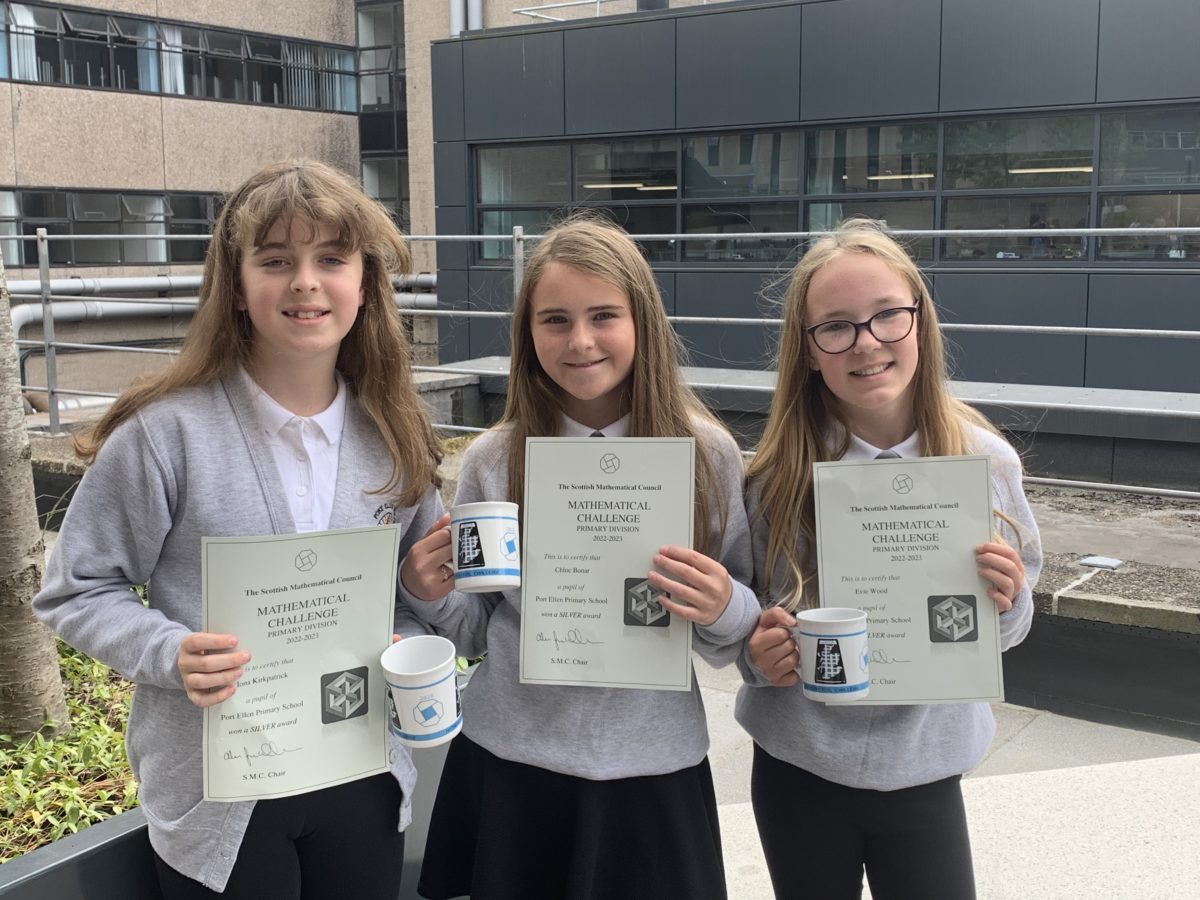
Joint Session Problem Solving
Harry Potter Escape Room
Primary 3 and 4 from Port Ellen met with Primary 4 and 5 in Bowmore to do a Harry potter Maths themed escape room. There was lots of problem solving to do, including sorting the potions and spells. It was great to meet with our friends in Bowmore to do some maths.
Pleased to report that everyone got out of the Hogwarts Escape Room! Fantastic fun, lots of great maths problem solving and meeting new friends from Bowmore Primary. Well done everyone. pic.twitter.com/lBQet11vcI
— Port Ellen Primary School (@portellenps) February 15, 2023
Christmas Fun in ELCC
We love painting and enjoyed painting a branch outside in the garden this morning, we want to make an outside Christmas tree 🎄. 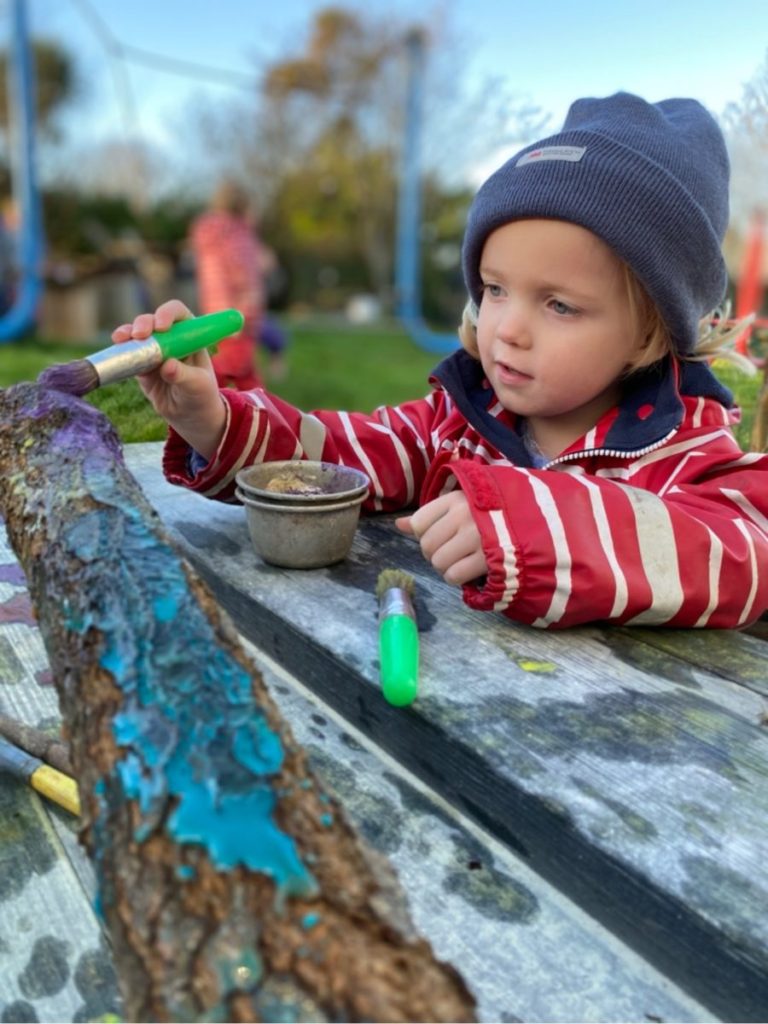 We had lots of discussion about ice and how cold it was in the nursery garden. We decided to make our own ice and added some bits of nature from the garden. Our freezer in the nursery was to small so we went and asked Mrs Holyoke if we could use her freezer!
We had lots of discussion about ice and how cold it was in the nursery garden. We decided to make our own ice and added some bits of nature from the garden. Our freezer in the nursery was to small so we went and asked Mrs Holyoke if we could use her freezer!
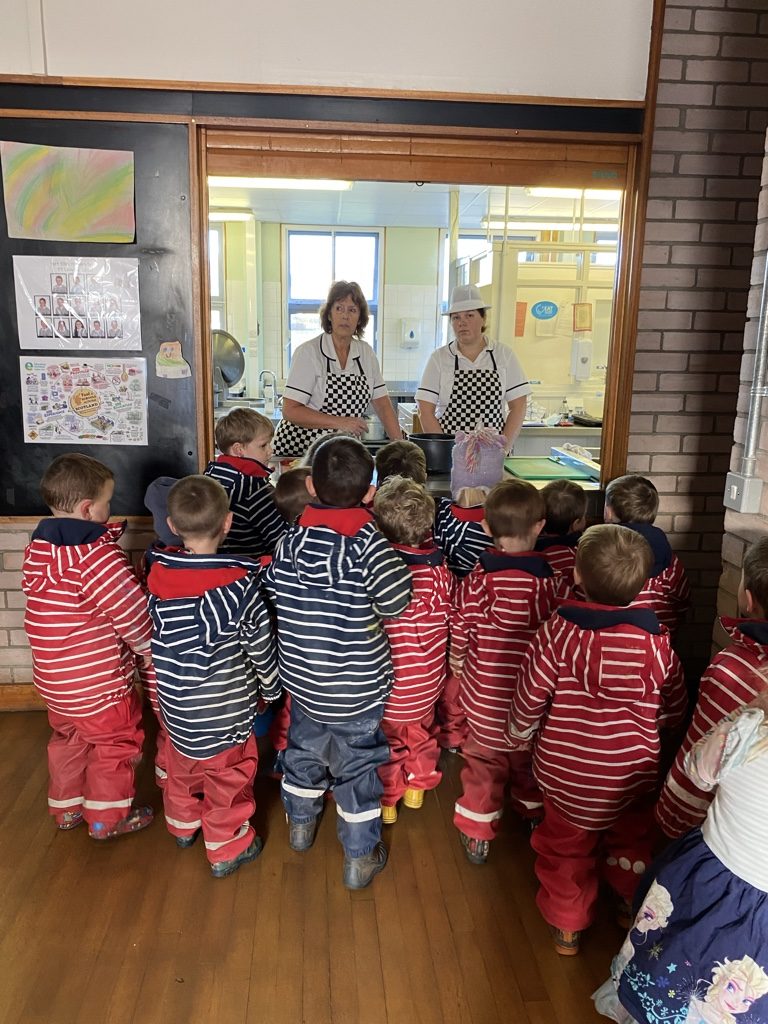
We also went on a hunt round the village to find the Christmas numbers to 6! Fred knew that number 3 was at the Ramsey and Nola knew that number 5 was at Campbells 🎄 ⭐️ we are learning to notice numbers in our environments and all around us. 👣 We have loved looking at all the house numbers and in the windows, we hope everyone doesn’t mind.
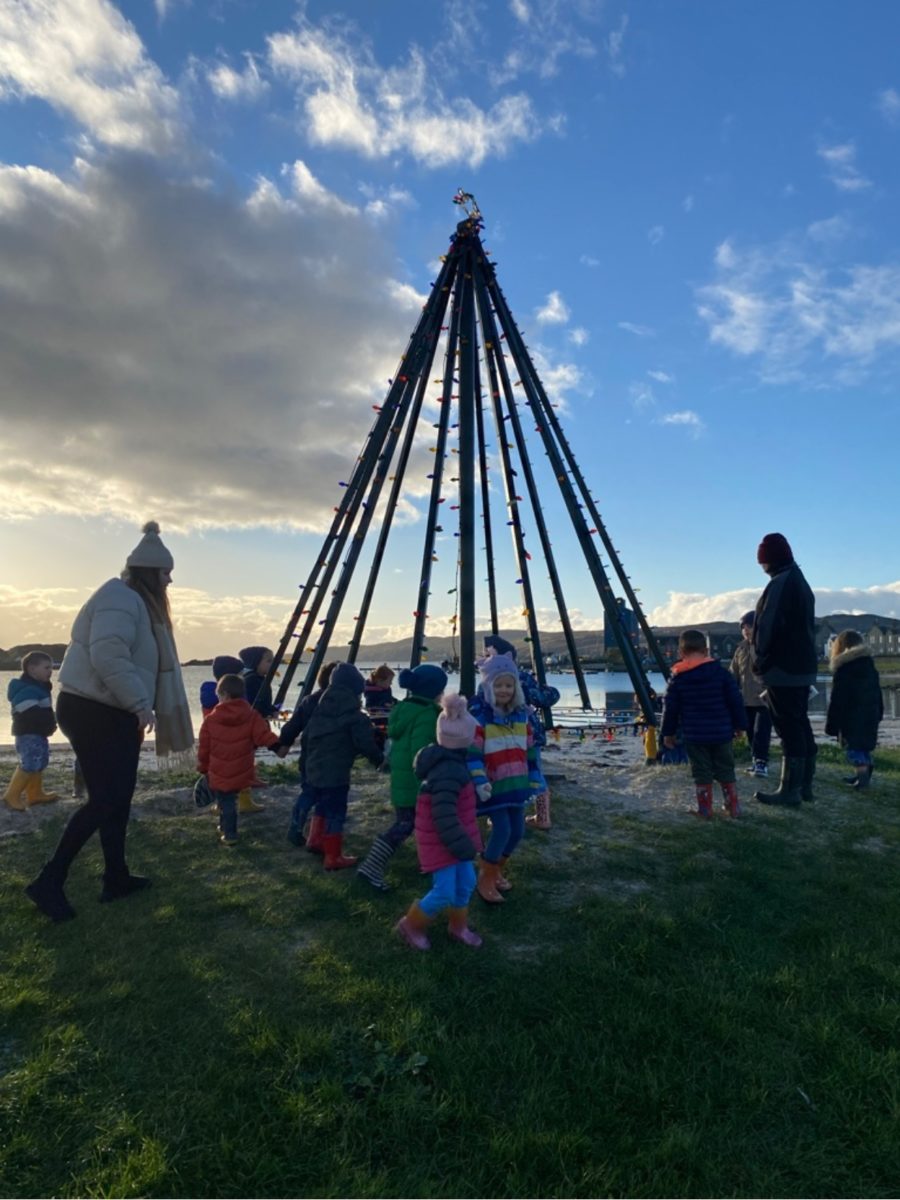
Maths Week Scotland
This week is Maths week scotland where every kid in Port Ellen primary school will be doing extra maths themed things. Maths Week Scotland lasts from 26.09.22 to 03.10.22. “Maths week scotland is brilliant and interesting!” says Ellie P5. Maths week scotland is a week where you celebrate the importance of maths. Lots of schools do extra fun maths activities like board games, drawing Infinity tiles and doing sumdog challenges.
In P567 they have been learning about lots of different things like competitions such as the Scottish Maths Challenge and Maths inside. They have done a zoom meeting on Infinity Tiles.
Infinity Tiles are squares where the lines end at the same point every time making a continuous design. They are used in many different types of art, especially Islamic art. They also learnt about fractals. Fractals are never ending patterns like a Sierpinski triangle which is a triangle inside a triangle, inside a triangle, inside a triangle, inside a triangle, etc, etc, etc.
Maths week scotland is lots of fun and lots of kids enjoy it and participate in the competitions. Even though lots of the challenges are very hard, lots keep on trying and get amazing scores!
By Evie
Maths Week Scotland
We were in a zoom call with Maths is Toast and we were learning about infinity tiles. Infinity tiles are things that can go on forever whatever way you put them they will always connect. They got us to learn about angles and different patterns.
We have finished the Scottish Maths Challenge which is what people do every year. We have three question everyone has to the same question and the Scottish Maths Challenge gives out awards like bronze, silver and gold. The questions are quite hard and you have to show your working out of the question but when you actually read the question it’s actually really easy.
This year we are doing the Maths Inside competition. It’s when you take a picture of something to do with maths and you put it on the website and they look at all the maths and the picture. This year there are options like shapes, in the wild and complete the pattern.
There is also a challenge on Sumdog with 1000 questions and all the schools in scotland are competing; it’s just questions like subtraction.
We have also got funding for maths homelink bags from Maths Week Scotland, and we now have lots of fun games we can take home and play to develop our maths skills.
A couple days ago we had a google meet with people that do vertical farming. Vertical farming is when there is a tower with loads of trays in it and a jet of water shoots in the top and there are holes in the trays and the water drips through the holes and there are L.E.D at the top which help with to process of growing the plants and they also grow trees. Instead of green houses.
William says ”I really like maths week scotland and it is very interesting”
By Dylan
P7s Highschool Visits
On Monday 17th May p7s received a visit from Dr Weatherhog where she talked to us about high school, uniforms and answered our questions.
She talked to us about the necessities we needed for high school . She told us all about induction days and how we would go about them. She then talked about behaviours and punishments. P7s then asked any questions that needed answered which took about an hour or so.
On Tuesday 18th May Mrs Mitchell came in and observed our maths. She helped us with our fractions, decimals and percentages. Then we came to the floor at the front and put the decimals on a number line. Next we turned percentages into decimals and fractions. Lastly we did decimal marble run on active learn then she headed back up to the high school. This is to help us with the transition to High School.
By Callie
Beach Clean 2019
 On Thursday 21st March the whole of Port Ellen Primary School went down to the co-op beach for a beach clean. There was also people from high school to help, they where the John Muir group, and also ReJIG. Before everyone went we got put into groups of 5. There was 10 groups. I got paired with Chloe, Katy, Christopher and Phoenix. P67 had created a survey so we could find out what the different types of plastic were that we foundon the beach. There were lots of small bits of plastic between 2.5 and 50cm long, but the biggest plastic pollutant was ropes and nets from fishing boats. You can see the results in the graph below. We collected 2 bags full of rubbish, lots of it was plastic. Altogether the school got 900 bits of plastic rubbish off the shore. When we left all the beach had was sand and seaweed.
On Thursday 21st March the whole of Port Ellen Primary School went down to the co-op beach for a beach clean. There was also people from high school to help, they where the John Muir group, and also ReJIG. Before everyone went we got put into groups of 5. There was 10 groups. I got paired with Chloe, Katy, Christopher and Phoenix. P67 had created a survey so we could find out what the different types of plastic were that we foundon the beach. There were lots of small bits of plastic between 2.5 and 50cm long, but the biggest plastic pollutant was ropes and nets from fishing boats. You can see the results in the graph below. We collected 2 bags full of rubbish, lots of it was plastic. Altogether the school got 900 bits of plastic rubbish off the shore. When we left all the beach had was sand and seaweed.

Scottish Math Challenge Success
 The Scottish Math Challenge is something that P6/7 have the chance to do every year. You get a set of three questions one in November, one in December and the final one in January. If you get up to 29 points that is a bronze 30 points that is a silver and if you get 33 points that is a gold. I got 32 points and that means that I got a silver which means that I get to go away to get an award and I was really pleased to get this and I want to keep on pushing myself further in STEM. Everyone else who took part in our class got a bronze. It is really important to know how to do some equations because it could help in a well paid job like being an engineer.
The Scottish Math Challenge is something that P6/7 have the chance to do every year. You get a set of three questions one in November, one in December and the final one in January. If you get up to 29 points that is a bronze 30 points that is a silver and if you get 33 points that is a gold. I got 32 points and that means that I got a silver which means that I get to go away to get an award and I was really pleased to get this and I want to keep on pushing myself further in STEM. Everyone else who took part in our class got a bronze. It is really important to know how to do some equations because it could help in a well paid job like being an engineer.
By Matthew Campell
Paper Bridge Engineering
 As part of our Engineering project this year we wanted to show we could get better at engineering. At the start of the project we had to build bridges, and ours were made from straws and did not work well or hold a lot of weight. We did the bridge building test again to see if we had improved, but this time we were only allowed to use paper to build our bridges. The point of it was to try and engineer a bridge that could hold a calculator, at first it was quite hard to make a bridge that could hold one. Me and Rowan decided to apply what we had learned in maths about 3D shapes and put cylinders under our bridge so that it could support the weight of a calculator, a lot of the bridges ended up being able to support a lot more than a calculator. Our bridge managed to hold 6kg in weight! I was surprised that it could hold that much because it was just paper and tape, eventually we over tested it and wrecked the cylinders on the bridge. Everyones bridge could hold at least a calculator and some bridges could hold more, our bridge could hold the most in the class which I was surprised about. We applied our engineering knowledge to building the bridge and this showed how much we improved!
As part of our Engineering project this year we wanted to show we could get better at engineering. At the start of the project we had to build bridges, and ours were made from straws and did not work well or hold a lot of weight. We did the bridge building test again to see if we had improved, but this time we were only allowed to use paper to build our bridges. The point of it was to try and engineer a bridge that could hold a calculator, at first it was quite hard to make a bridge that could hold one. Me and Rowan decided to apply what we had learned in maths about 3D shapes and put cylinders under our bridge so that it could support the weight of a calculator, a lot of the bridges ended up being able to support a lot more than a calculator. Our bridge managed to hold 6kg in weight! I was surprised that it could hold that much because it was just paper and tape, eventually we over tested it and wrecked the cylinders on the bridge. Everyones bridge could hold at least a calculator and some bridges could hold more, our bridge could hold the most in the class which I was surprised about. We applied our engineering knowledge to building the bridge and this showed how much we improved!
By Holly
Scottish Maths Challenge Success!
 Every year Mrs Clark’s class take part in the Scottish Maths Challenge, a competition where you have to complete tricky maths problems that require you to think outside the box. It is a great way to improve your maths problem solving skills and learn to apply strategies to help you work out the answers. Children can opt to take part in the challenges, and there are three sets of questions over the year. One of the questions this year was:
Every year Mrs Clark’s class take part in the Scottish Maths Challenge, a competition where you have to complete tricky maths problems that require you to think outside the box. It is a great way to improve your maths problem solving skills and learn to apply strategies to help you work out the answers. Children can opt to take part in the challenges, and there are three sets of questions over the year. One of the questions this year was:
Colin and Tom are on a camping holiday and, at their campsite, they make friends with Fiona. They ask her when her birthday is but, being a bit of a joker, Fiona tells them only that it is one of the following;
May 14, July 12, May 15, May 18, June 16, June 19, July 15, August 12, August 14, August 16.
She then tells Colin the month of her birthday, but not the day in the month, whilst she tells Tom the day in the month, but not the month.
Immediately, Colin Declares “Well Tom certainly cannot know for sure when Fiona’s birthday is.”
to which Tom replies “Ah, but now I do.” “And now I know when it is as well,” comes back Colin.
When is Fiona’s birthday? Explain your reasoning.
Quite tricky!
The children who took part have been very successful and should be proud of their perseverance and skills. Ellie and Matthew have achieved a bronze medal and Eva, Ruaraidh, Rowan, Rebecca and Kaitlyn achieved a silver medal in the competition. Kaitlyn and Rebecca missed out on the gold by one point! Well done everyone.
The Scottish Mathematical Challenge
 This year pupils at Port Ellen primary school took part in the Scottish Mathematical Challenge where they had to answer problem solving questions 3 times over the year showing their working out. To get a bronze award you couldn’t lose more than 10 points, to get a silver award you couldn’t lose more than 6 points and to get a gold award you couldn’t lose more than 3 points. Rebecca, Katie, Ross and Matthew got a bronze award and I got a silver award missing out on a gold award by only one point! I feel happy because I got a silver I am also very surprised because I didn’t think my problem solving was that good. One of the questions was “Maureen, Alice and Siobhan are three young sisters, in that order of age. Alice is two years older than Siobhan. Each year, their wealthy aunt gives each of them, for each year of her age, as many pounds as she is years old. For example, on her first birthday a girl would receive one pound and on her third birthday nine pounds. The aunt has promised to continue this family custom with each girl until her twelth birthday. This year Maureen received as much as Alice and Siobhan put together.
This year pupils at Port Ellen primary school took part in the Scottish Mathematical Challenge where they had to answer problem solving questions 3 times over the year showing their working out. To get a bronze award you couldn’t lose more than 10 points, to get a silver award you couldn’t lose more than 6 points and to get a gold award you couldn’t lose more than 3 points. Rebecca, Katie, Ross and Matthew got a bronze award and I got a silver award missing out on a gold award by only one point! I feel happy because I got a silver I am also very surprised because I didn’t think my problem solving was that good. One of the questions was “Maureen, Alice and Siobhan are three young sisters, in that order of age. Alice is two years older than Siobhan. Each year, their wealthy aunt gives each of them, for each year of her age, as many pounds as she is years old. For example, on her first birthday a girl would receive one pound and on her third birthday nine pounds. The aunt has promised to continue this family custom with each girl until her twelth birthday. This year Maureen received as much as Alice and Siobhan put together.
How much will Siobhan receive next year?” I found this quite tricky. There was also a question about a diagram that represents a rectangular net, which is made from string notted together at different points. Another one was about a diving competition where there are 5 judges that each awards a whole-number from 1-10 and you had to work out all the possible scores awarded. It was really challenging but helped me get better at my maths problem solving. There is an award ceremony in June in Glasgow. Next year I will try to get a gold.
Negative Numbers
P567 have been learning about negative numbers and how they are in temperature. The lowest temperature that negative numbers go down to is -274 degrees and positive numbers go up to infinity. We also learned that negative numbers can some times be in lifts like if there is a basement or a cellar in a hotel or a museum.It also appears in world temperature like the weather might say Paris is -1 degrees and Romania is 16 degrees and all the other countries might be different than Paris or Romania. This is what we have learned.
Compass Points
 We have been learning about compass points because it helps us with our orienteering because you need to know your compass points to get to the markers. All the compass points are north represented by an N then there is north-east represented by an NE after that there is east represented by an E then there is south east represented by a SE then there is then there south represented by an S and that is half the circle. Then on the other half of the circle, there is south west represented by SW then there is west represented W then there is north-west is represented by NW then is north again. There is a degree for each compass point which helps you to know if you’re facing the right way. When you change the degrees to north to east or to east to south you add 45 degrees on because each turn you do you add 45 degrees. North is either 360 or 0 and north-east is 45 degrees. East is 90 because 45 add 45 is 90 degrees. South east is 125 degrees. South is 180 degrees. South west is 225. West is 270 degrees and north west is 315. Then back to north which is 0 degrees.
We have been learning about compass points because it helps us with our orienteering because you need to know your compass points to get to the markers. All the compass points are north represented by an N then there is north-east represented by an NE after that there is east represented by an E then there is south east represented by a SE then there is then there south represented by an S and that is half the circle. Then on the other half of the circle, there is south west represented by SW then there is west represented W then there is north-west is represented by NW then is north again. There is a degree for each compass point which helps you to know if you’re facing the right way. When you change the degrees to north to east or to east to south you add 45 degrees on because each turn you do you add 45 degrees. North is either 360 or 0 and north-east is 45 degrees. East is 90 because 45 add 45 is 90 degrees. South east is 125 degrees. South is 180 degrees. South west is 225. West is 270 degrees and north west is 315. Then back to north which is 0 degrees.
Bearings
The bearing of a point is the angle measured from the north line. Bearings help you find your destination so if you are new town bearings can help you around the place.
 This diagram shows compass points and the bearings plus the angles of a compass. You can see the bearing of A from B is 065° and from B from A is 245°.
This diagram shows compass points and the bearings plus the angles of a compass. You can see the bearing of A from B is 065° and from B from A is 245°.
This is a triangle that is labelled a to b b to c and c to a.
A to B = South West
B to C = South East
C to A = North West
This is a hexagon labelled a b c d e f: A to B =south west
B to C= South C to D = South East D to E = North East E to F= North F to A =North West
By Ruaraidh and Rowan at Port Ellen Primary School
Maps, Grid References And Coordinates
There are 2 lines that are on all maps and they are called the vertical and the horizontal lines. They are always in a straight line and they either go up and down or across the way. Grid references are between the lines which make it look like a maths square that has numbers. The difference between grid references and coordinates is that coordinates are where the lines meet and grid references are in between the lines. We are learning about grid references in school and we already know six figure grid references and four figure references. Every ordnance survey map in the world has a six figure grid references and a four figure grid references for every place. We also learnt about coordinates. We played battleships to help understand grid references. We know you say the horizontal line first and the vertical line after. The horizontal line is the X axis at the bottom and the vertical line is the Y axis.
We found a map of the school and we thought it would be a good map to use for orienteering because the one we have is old and things aren’t in the same place anymore. Then we realised we didn’t have some things on the new map so we went outside and measured the things that weren’t there by how wide they are, how long they are and how far away from some things like the school and the fences area. After that we measured them to scale and put them on our map. Now we use the map to make up orienteering courses. This is the map we use and we use it to do orienteering in school.



